The coyote is a complex character, enduring a rich history with the human world. For the Navajo/Diné, the coyote is a character of transgressive power, a revered cultural being whose actions are often seen as a reflection of our own morality. Even in a contemporary sense, they are mischievous instigators, often believed to be an invasive species, challenging the livelihood of rural ranchers and farmlands. But they have always been a symbiotic creature on the periphery of human civilizations.
It’s through this lens one might consider the coyotes I paint, which are often situated in man-made worlds. They can be seen wandering throughout vacant interiors of contemporary environments. Inhabiting these spaces void of humans, they charge the narrative with questions and curiosity, perched on chairs or perhaps a canoe. Forms and associations of the Western imagination become the resting place for nature’s determined creature on four skinny legs, taking back the places we see as our own.
•

“At Night He Was Okay with His Sexuality,” 2009, oil on canvas, 16×16″
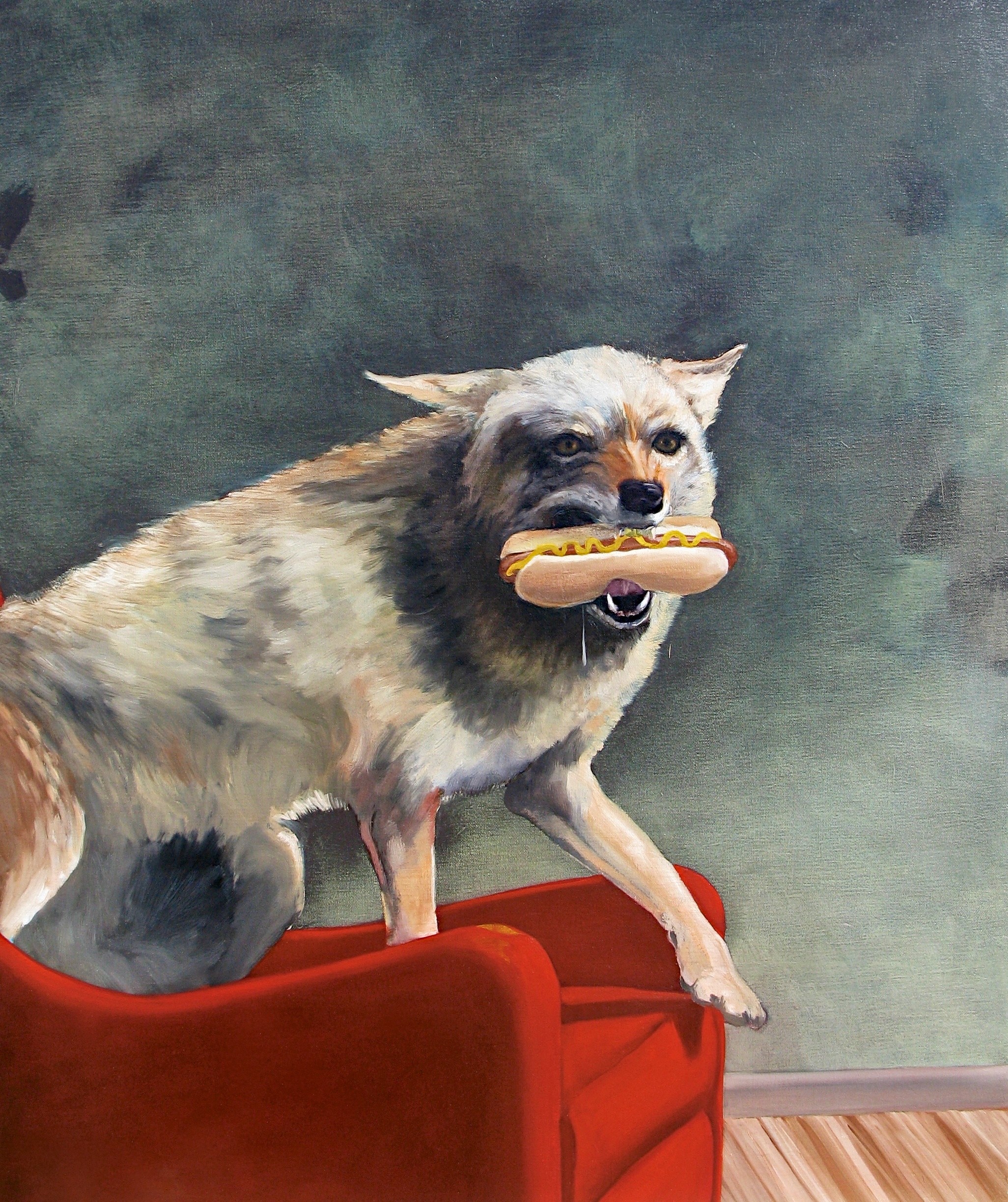
“Coyote with Hotdog,” 2012, oil on canvas, 30×36″
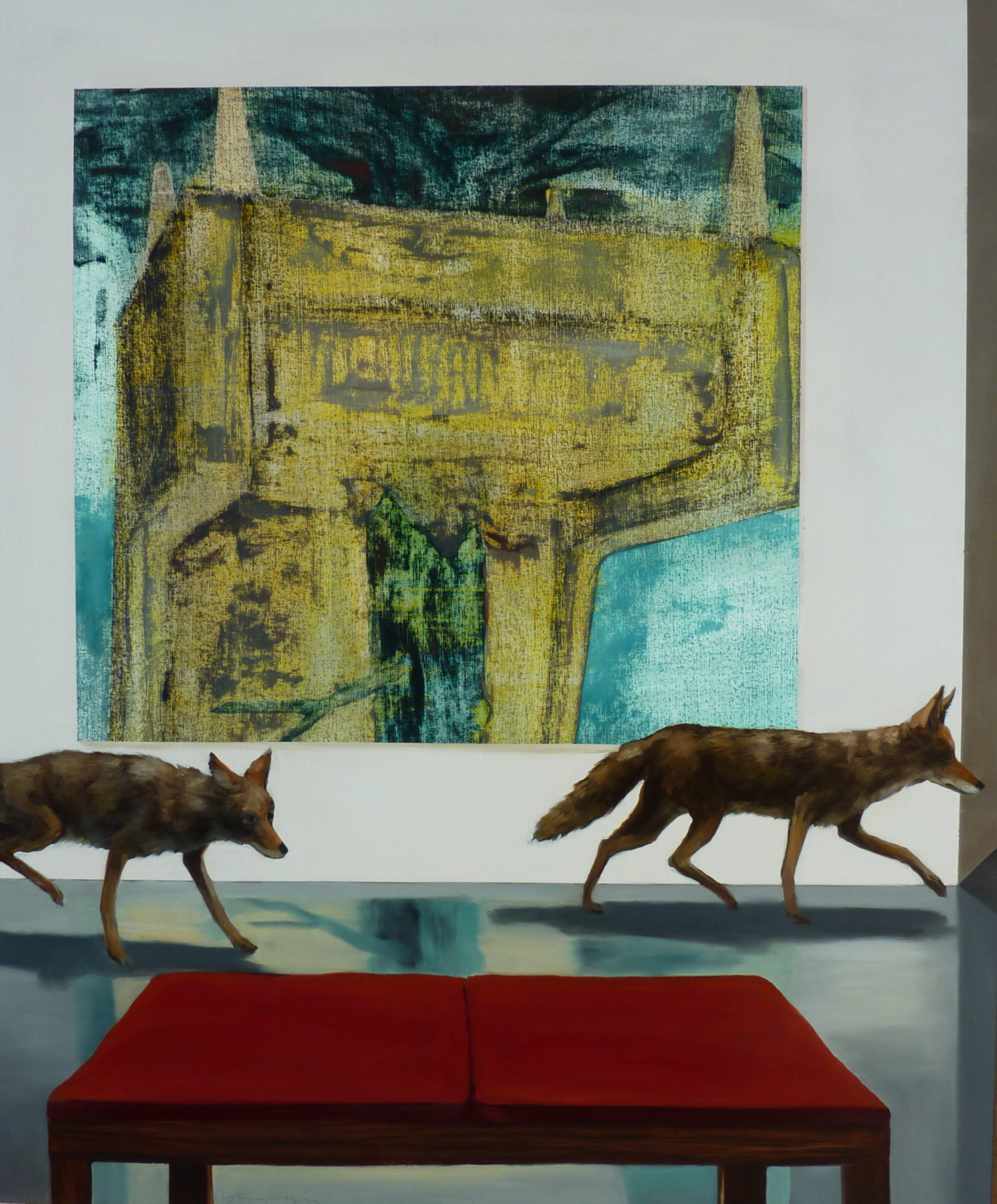
“Death of the Curator II,” 2011, oil on canvas, 48×60″
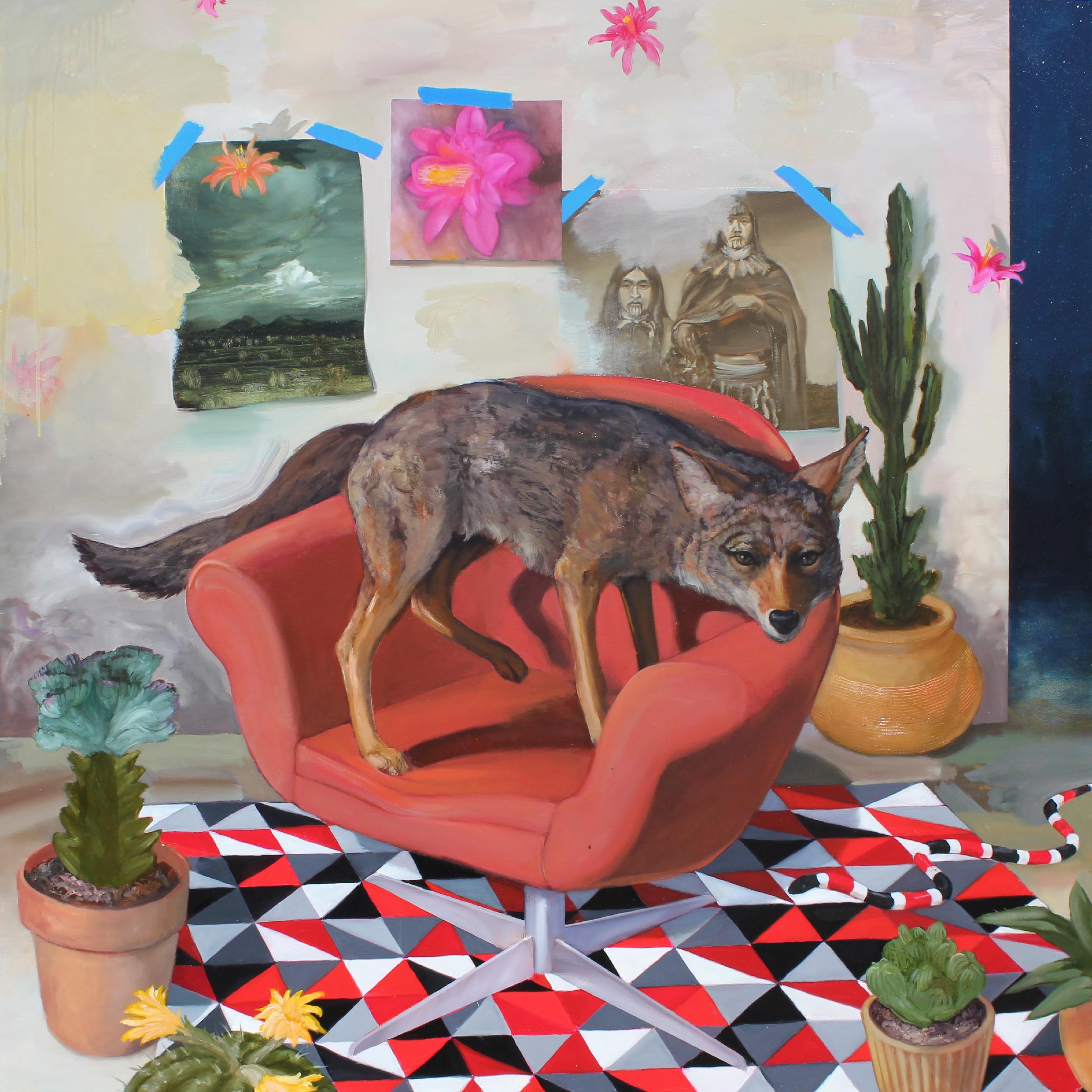
“Desert Life,” 2012, oil on canvas, 30×30″
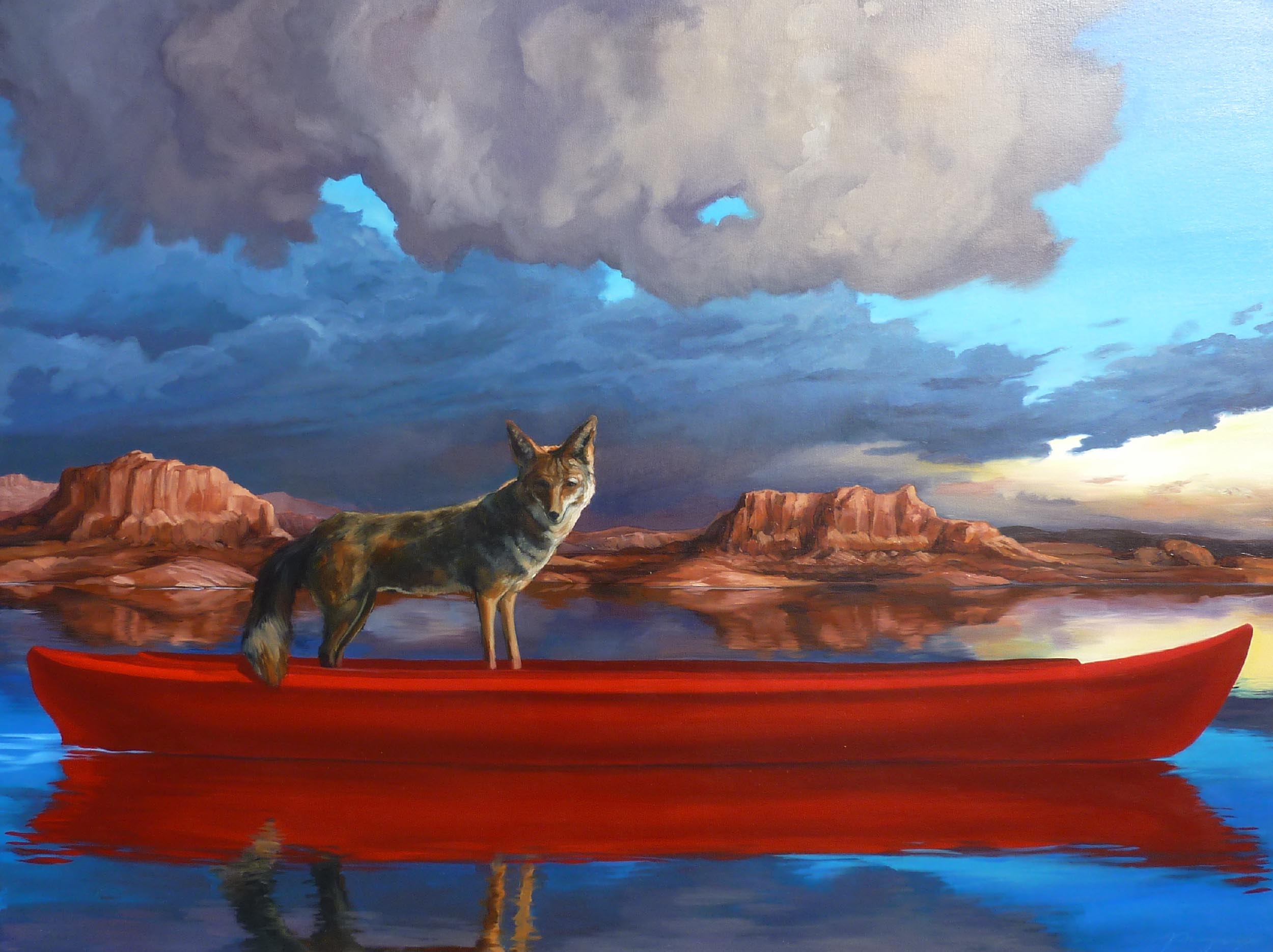
“Canoe,” 2010, oil on canvas, 60×47″
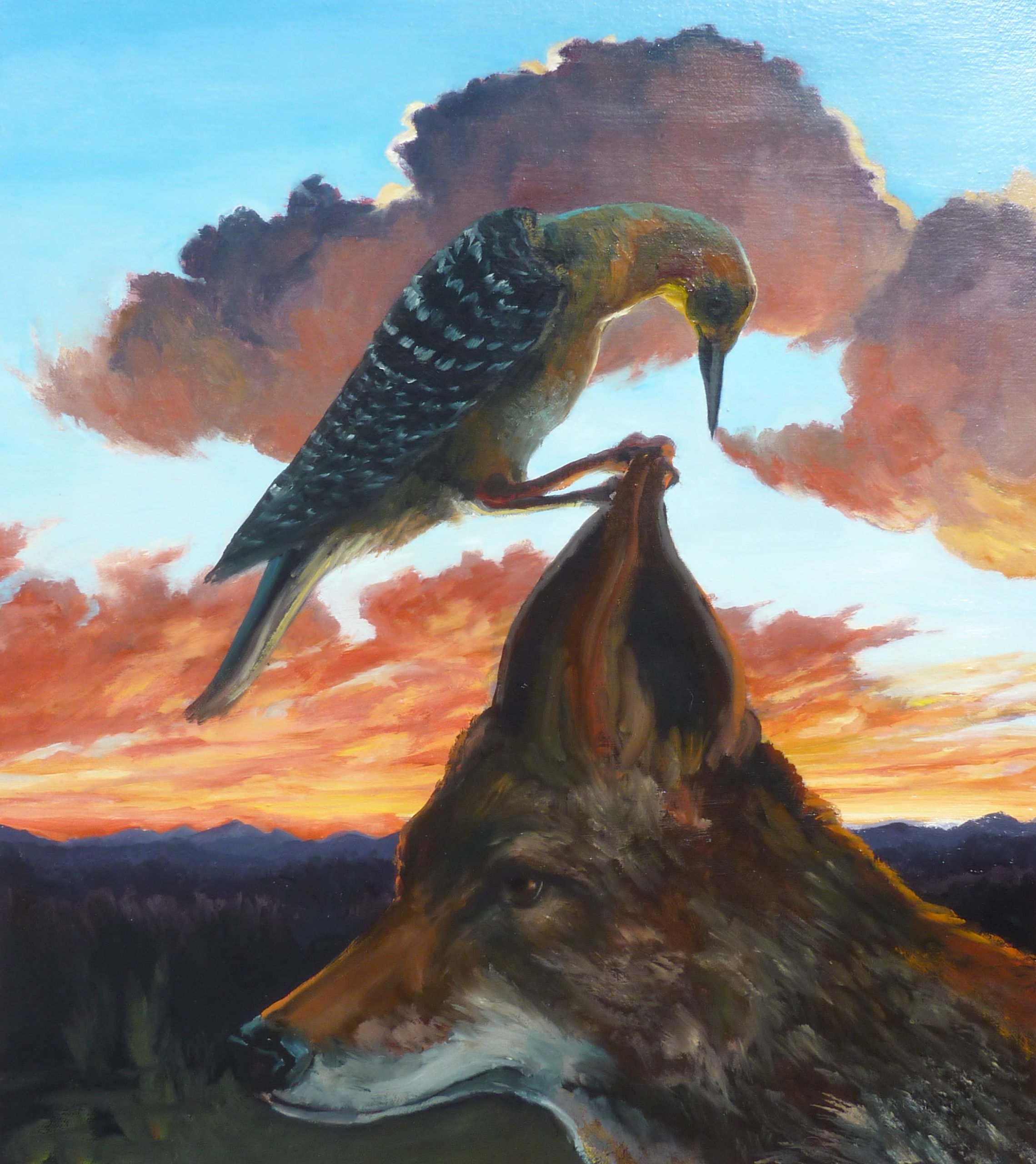
“Bird on The Head,” 2010, oil on canvas, 16×20″
•••
Steven J. Yazzie is a multidisciplinary artist working in video, painting, and installation. He is a member of the Navajo Nation and a veteran of the Gulf War serving honorably with the United States Marine Corps. He received a BFA in Intermedia at Arizona State University and was named the 2014 outstanding graduate for the Herberger Institute for Design and the Arts. He studied at Skowhegan School of Painting and Sculpture and is the co-founder of Digital Preserve LLC, a video-production company that collaborates with artists, filmmakers, and interdisciplinary creatives to produce meaningful stories and content that highlight indigenous issues.
Yazzie’s work has been exhibited nationally and internationally at such venues as the Museum of Modern Art, New York; Smithsonian National Museum of the American Indian, New York; National Gallery of Canada; Art Gallery of Ontario; the Heard Museum; the Institute of American Indian Art: Museum of Contemporary Native Art; and the Wheelwright Museum.
